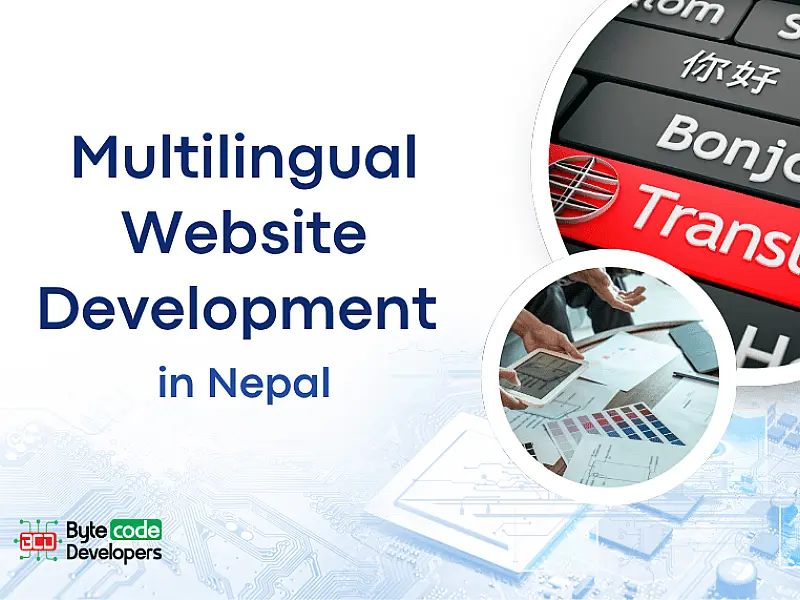
Table of Contents
Why Multilingual Websites Matter in Nepal
Nepal is a linguistically diverse country with over 120 recognized languages. While Nepali is the official language, English, Maithili, Bhojpuri, and Newar are also widely used.
Having a multilingual website allows you to:
- Reach both local and global Nepali-speaking audiences
- Improve engagement and trust among diverse users
- Increase sales and inquiries from different regions
- Compete better in the international digital space
- Improve user experience and accessibility
Whether you're an NGO, travel company, law firm, or e-commerce store, multilingual content builds inclusivity and reach.
Languages to Include on Your Website
| Language | Reason to Include |
|---|---|
| Nepali | National language, understood by most |
| English | International users, legal/business terms |
| Maithili | Widely spoken in eastern Terai |
| Bhojpuri | Spoken in central/southern regions |
| Newar (Nepal Bhasa) | Cultural audience in Kathmandu Valley |
| Tamang/Gurung/Rai | Useful for regional tourism or community outreach |
Start with Nepali + English, then add based on your user base.
Key Features of a Multilingual Website
- Language switcher in top menu or floating button
- URL structure per language (e.g., /en/, /np/)
- Consistent translations across pages
- SEO-optimized meta tags for each language
- Translation fallback if content is missing
- RTL (Right-to-Left) support for some regional scripts if required
- Editable content for manual correction.
Popular CMS and Tools for Multilingual Sites
| Platform | Pros |
|---|---|
| WordPress + WPML/Polylang | Most flexible and widely used |
| Laravel + Laravel Localization | Full custom control |
| Shopify | Limited, but apps exist (e.g., Langify) |
| Wix/Weebly | Drag-and-drop, beginner friendly |
| Drupal | Great for large NGO or government sites |
WordPress is the most popular option in Nepal due to ease of use, community support, and plugin ecosystem.
Multilingual SEO Best Practices
- Use hreflang tags to signal language/region
- Use different URLs for each language (example.com/en/, example.com/np/)
- Meta titles and descriptions per language
- Don’t auto-redirect users based on browser—let them choose
- Create sitemaps for each language version
This helps you rank separately in Google Nepal, Google India, and global SERPs.
UI/UX Tips for Multilingual Interfaces
- Keep switcher always visible (top-right or sticky)
- Don’t cram all languages into the same page
- Use icons (e.g., flags) sparingly—some find them controversial
- Allow enough space for longer text (some languages expand)
- Avoid auto-switching or pop-ups on load
Legal and Cultural Considerations
- Respect local dialects and regional identities
- Ensure correct usage in legal or policy content
- Include a disclaimer on machine translations
- Follow accessibility guidelines for screen readers in each language
- Maintain tone consistency across versions
Mobile Optimization for Local Languages
- Load lighter versions of fonts (esp. Devanagari)
- Use Unicode standard, not image-based text
- Ensure readable font size and alignment on mobile
- Test language switching on both Android and iOS
- Prioritize performance—optimize for 3G connections
Most multilingual users browse from mobile don’t skip mobile-first testing.
Hosting and Performance for Global Reach
Use global CDN + local caching to serve both:
- Nepali users (Pokhara, Kathmandu, Biratnagar)
- Diaspora in UAE, US, UK, Australia
Top picks:
- Cloudflare + DigitalOcean
- Hostinger with CDN
- AWS Lightsail + S3 for static assets
Conclusion
Multilingual website development in Nepal is more than a trend it's a strategic necessity for businesses, NGOs, schools, and startups aiming to connect with Nepal’s diverse audience.
- Builds trust and inclusion
- Improves SEO and global reach
- Enhances user experience
- Drives more conversions
In 2025, your message should reach everyone in their language.




 March 26, 2025
March 26, 2025

-thumb.webp)











